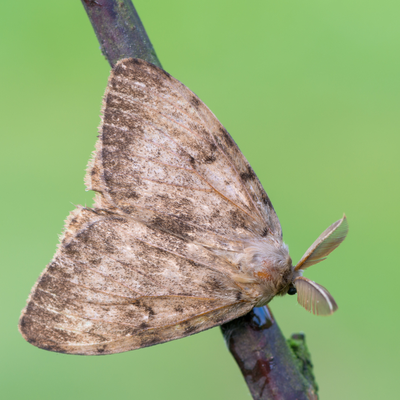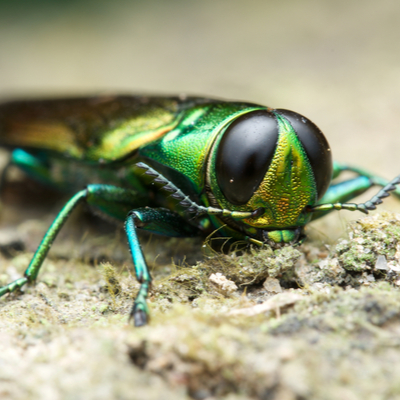Trees are not just the aesthetically appealing lawn ornaments of our landscapes. They are vital to our ecosystem. Standing tall and proud, they are the backbone of our planet, providing much-needed oxygen for all living things. They provide shade, stabilize the soil and act as sound and pollution filters. As providers of food for tons of birds and wildlife, they also provide homes to many of the same.
Unfortunately, like all living things, they are vulnerable to certain diseases and insects. At Greenkeeper, we offer tree and shrub care services to clients surrounding the Memphis area in Tennessee and Mississippi. There are many different conditions that affect our beloved trees and shrubs causing discoloration, broken limbs and tree branches, and sometimes even death. The best way to help protect the trees and shrubs on our own landscapes is to recognize the signs and symptoms of disease and pests as well as learn how to prevent and treat them. In this article, we examine two of the most common tree pests that damage our valuable trees. 
Gypsy Moth
One such insect that is a major threat in both Tennessee and Mississippi is the gypsy moth. Gypsy moths are responsible for defoliating more than a million forested acres of land across the U.S. each year. The female gypsy moth lays her mass quantity of eggs in a variety of places including bark crevices, on the underside of branches, under decks, firewood, and lawn furniture from middle June to early July. The eggs hatch in early April when the trees start producing leaves. The caterpillars go through five to six growth stages, increasing in size. They then feed on the leaves of oak, birch, elm, and maple leaves, leaving behind empty branches and bare trees. Signs and symptoms of gypsy moths include visually seeing them or their eggs and tree defoliation.
How To Prevent and Control the Gypsy Moth
First, learn to recognize the egg masses, caterpillars, and adults. These tree decimators like to hitch rides on any outdoor items within their reach, including your camper and firewood. When traveling anywhere outdoors, thoroughly inspect your vehicle, camper, outdoor furniture, and firewood for egg masses before leaving. If you find any, remove the egg masses immediately by scraping them off with a putty knife or stiff brush. Dispose of the egg masses in a container of hot soapy water or place them in a sealed plastic bag and set them in the sun.
Proper tree maintenance such as fertilizing, watering, and pruning when needed will help keep trees healthy and strong if infested. Reduce the number of places a female moth has to hide their eggs by maintaining a clean yard free of debris. If using a pesticide to treat gypsy moths, it must be applied between May and June. The most common treatment is a spray called Bacillus thuringiensis. Bacillus thuringiensis kurstaki is the specific strain of treatment that must be used solely for gypsy moth control. Because pesticides can be highly confusing and dangerous if used improperly, we highly suggest contacting a professional such as the team at Greenkeeper who is trained and knowledgeable in the care of trees and shrubs.
Emerald Ash Borer (EAB)
This bright green metallic beetle is responsible for the destruction of ash trees throughout Tennesee and beyond. To date, only two states, Florida and Mississippi, have not reported EAB, but the disease is close and knocking on Mississippi’s door. An invasive species, emerald ash borer, was thought to have been brought over on wooden packing materials from China. Adults are typically 1/2 an inch long and 1/8 inch wide. Eggs are even smaller and reddish-brown, while larvae are white and flat-headed. After adult females lay eggs in mid to late May, the larvae puncture holes into the ash tree and feed under the bark. Doing so disrupts the tree’s ability to transport water and nutrient to its roots. Without water or nutrients, the leave’s tips start dying, and the bark begins splitting. If not treated, most ash trees will die within two to three years after becoming infected.
Emerald ash borer will display distinct symptoms including:
- Yellow, thick, or wilted foliage
- Unusual woodpecker presence and pecking holes
- Exit holes shaped like a D-shaped beetle
- Stems growing from the roots or a tree’s trunk

Prevention and Control
Only buy and burn local firewood. Do not move firewood because invasive species such as the EAB can sit on firewood for long periods of time. Keep ash trees healthy through a tree maintenance program and fertilizer, water, mulch, and prune as needed. While a few years back, there seemed to be no hope where EAB was concerned, research has come a long way. There are now different types of treatment available, including soil injections, trunk injections, and sprays. Not all of them are 100% effective for each tree and each situation. It’s important to have a tree and shrub care expert, like Greenkeeper, come out and examine your landscape to ensure you are using the appropriate treatment at the right time for the level of disease your ash tree contains.
Get UltimateTree and Shrub Care With the Professionals at Greenkeeper
The team at Greenkeeper is fully equipped and prepared to provide quality care for your trees and shrubs. We offer a six-step tree and shrub care program that will maintain the health and strength of your Tennessee and Mississippi trees. It includes fertilizer, insecticides, and fungicides for the overall care and protection of your lawn ornaments. We also specialize in the inspection, analysis, and treatment of pest infestations and diseases. If you believe one of your trees has emerald ash borer or is infected with gypsy moths, we can help. Call the experts today. If you are in Tennessee, call 901-861-2338. In Mississippi, call 662-895-2088. Or fill out our form via our website.
Obtain more tips and ideas by reading our other blog articles. Want to get to know us better? Follow us on our Facebook page.
